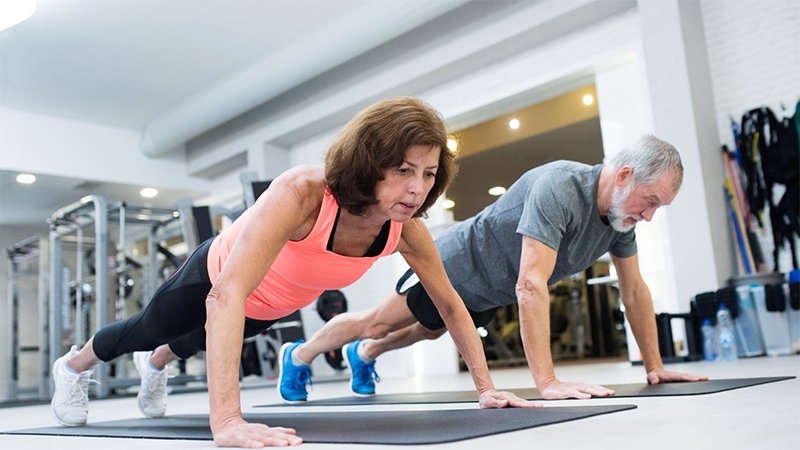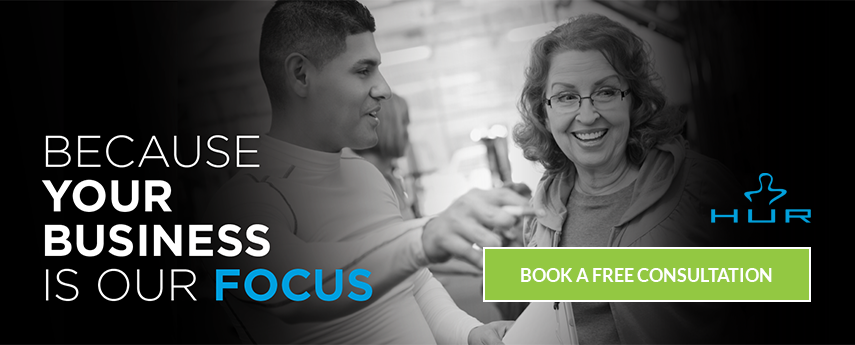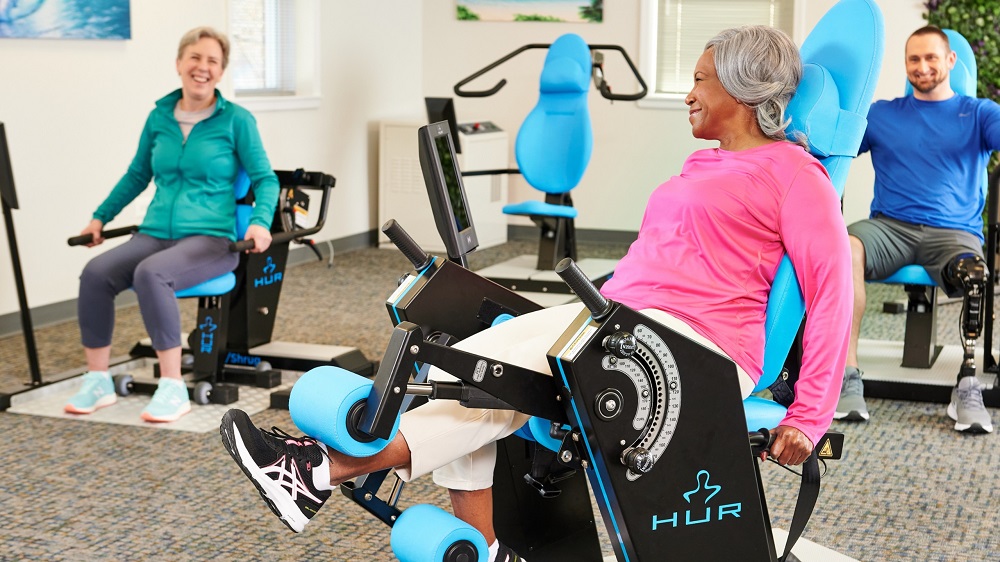While the physical benefits of wellness programs for seniors is well documented, the business side of wellness, especially for senior living communities, is often overlooked. This was the topic of a recent educational webinar produced by HUR and delivered by Dr. Rob Winningham, Ph.D.
 Dr. Winningham received his Ph.D. in Neuroscience from Baylor University and has 25 years of experience researching human memory and has largely focused on older adults and ways to enhance their mental functioning and quality of life. He creates brain stimulation activities that have been used in thousands of retirement communities and rehabilitation facilities including Dr. Rob’s Cognitive Connections with Masterpiece Living.
Dr. Winningham received his Ph.D. in Neuroscience from Baylor University and has 25 years of experience researching human memory and has largely focused on older adults and ways to enhance their mental functioning and quality of life. He creates brain stimulation activities that have been used in thousands of retirement communities and rehabilitation facilities including Dr. Rob’s Cognitive Connections with Masterpiece Living.
Dr. Winningham has trained thousands of professionals to offer high quality cognitive rehabilitation and therapy programs. But, in the 25 years that Dr. Rob has spent focused on cognitive stimulation programs, nutritional neuroscience, and the relationship between exercise programs and social support, one of the things he’s become extremely cognoscente about is how important it is to be mindful of the business environment.
“Things have changed dramatically over the past couple of decades. When I was first starting out in this field, the common thinking was that to have a good wellness program you only had to worry about the ‘3 B’s’ – Bingo, Bibles, and Birthdays. I also remember working with a senior living community with 100 residents and an activities budget of $150/ month. Even 20 years ago, that number was extremely low, especially since their marketing budget was many times that. I began to become aware of the fact that the best marketing then – and especially now – is to have a vibrant wellness program.” - Dr. Rob Winningham
Over the years, many of the best senior living communities in the country have come to understand the impact that focusing on wellness can have on the bottom line. This is significant, because wellness programming is essential to creating the best communities we can. For senior living communities focused on growth, it’s more important than ever to invest in fitness and brain health programming, and in creating environments in which seniors can live meaningful and purposeful lives.
“Over the years, a lot of the people I’ve most enjoyed working with because they are so passionate about active aging, have been front line staff that aren’t in a position to make budgetary decisions for their organization. This can be frustrating so I want to do all I can to equip them with information about the Business Side of Wellness so that they can approach decision makers with confidence.” - Dr. Rob Winningham
A few of the business outcomes that we'll address include:
- How wellness programs can fulfill your mission
- How wellness programs are great for marketing
- How wellness programs impact occupancy rates
- How wellness programs increase resident engagement and satisfaction
- How wellness programs can increase the Length of Stay for residents
- And how to create a wellness program that actually generates revenue
We’ve all known for a long time that the population is growing. The oldest of the 72 million baby boomers are now in their mid 70s, and one of their most distinguished features is that they really value wellness. Life expectancies have been increasing throughout their lives, resulting in a Longevity Bonus for many of them. And, the thing is, most of them are not only expecting to live longer, they’re expecting to live well. This affects our communities.
“One of the most important implications to understand about the population shift is that more and more older adults are not only expecting to live longer – they are expecting to live well.”
– Active Aging Magazine
According to research conducted by the AARP, 91% of adults over the age of 40 believe that maintaining a healthy lifestyle is extremely or very important. 69% believe that exercise is extremely important and say that the #1 ingredient for a happy retirement is health.
It’s this group of people that most senior living communities most want to attract.
No one wants to spend their retirement years dealing with health problems, and more and more people understand that health, physical fitness, and wellness are what’s going to allow them to enjoy their retirement years.
But several common barriers stand in the way of healthy, active aging for many people. One of the biggest barriers is a lack of motivation to exercise on a regular basis. We conducted a survey to find out why people weren’t exercising and 39%responded that they simply felt a lack of motivation.
Other barriers include:
- Poor equipment options
- Previous sedentary lifestyles habits
- A fear of failure
- Memory loss/ confusion
- Not having close access to the gym
- Depression
- Not having a good understanding of the benefits of exercise
Overcoming the Effects of Depression, Apathy, and a Lack of Motivation
It’s common for physical therapists to report that the patients who don’t fully engage in the rehabilitation process also don’t reap as many benefits. One study showed that 49% of how much a patient improved in physical therapy was predicted by their level of motivation.
According to leading psychologists, motivation is determined by two factors:
- Self-efficacy: The believe that one can manage the demands of a challenging situation and attain a desired outcome
- Believing that there’s a benefit to doing it
Hundreds of studies have shown us the benefits of physical exercise for adults of all ages. It improves our physical condition, of course, but exercise also improves cognition, memory, mood, driving ability, decreases our risk of falling, increases independence, and much more.
It’s important to share these benefits with seniors. But, often the problem lies not in understanding the benefits of exercise, but rather in the belief that they aren’t capable of doing what it takes to reap those benefits.
For senior living staff members, the following scenario might sound familiar…
A new resident moves in to a community with a robust wellness program and state-of-the-art fitness center. The staff member tells them about all the wonderful programs, classes, and activities they can participate in and the resident responds with, “Do you know how old I am???” Which really means, “I am too old for exercise and no longer capable of much physical activity.” This is a self-efficacy problem.
How To Overcome Self-Efficacy Based Objections to Exercise
You can help residents increase their self-efficacy by providing opportunities for them to succeed. Success beget success. When we succeed at something, it’s human nature to feel like we can do it again.
It’s also important to show them objective measures of their success. This is common in physical therapy, but we can do this in every area of senior wellness.
For example, when working one-on-one with seniors, begin and end every workout with a successful experience. This is especially important if you’re taking them through a particularly challenging workout.
The HUR SmartTouch outcome report showcases improvement in a particularly effective way because it’s built into each piece of equipment. Even when the user doesn’t FEEL like they’re making progress, all they have to do is look up on the touchscreen and to SEE their progress.
“The data is very motivating for our residents. Even when they don’t feel like they’re making progress, they can look at the screen and see that they are. The data is so powerful our trainers incorporate it into progress reports as a way to keep our residents motivated.”
– Jan Olson, Fitness and Living Well Manager, Paradise Valley Estates, CA
Other Common Barriers to Investing in Wellness Programs
- No (or minimal) financial support from leadership
- Wellness center is viewed as an expense vs. a potential revenue source
- Size, space, and budgets are too low for an effective fitness and wellness program
Without fully understanding how wellness programs and fitness centers can drive sales, it’s difficult to get leadership to invest.






